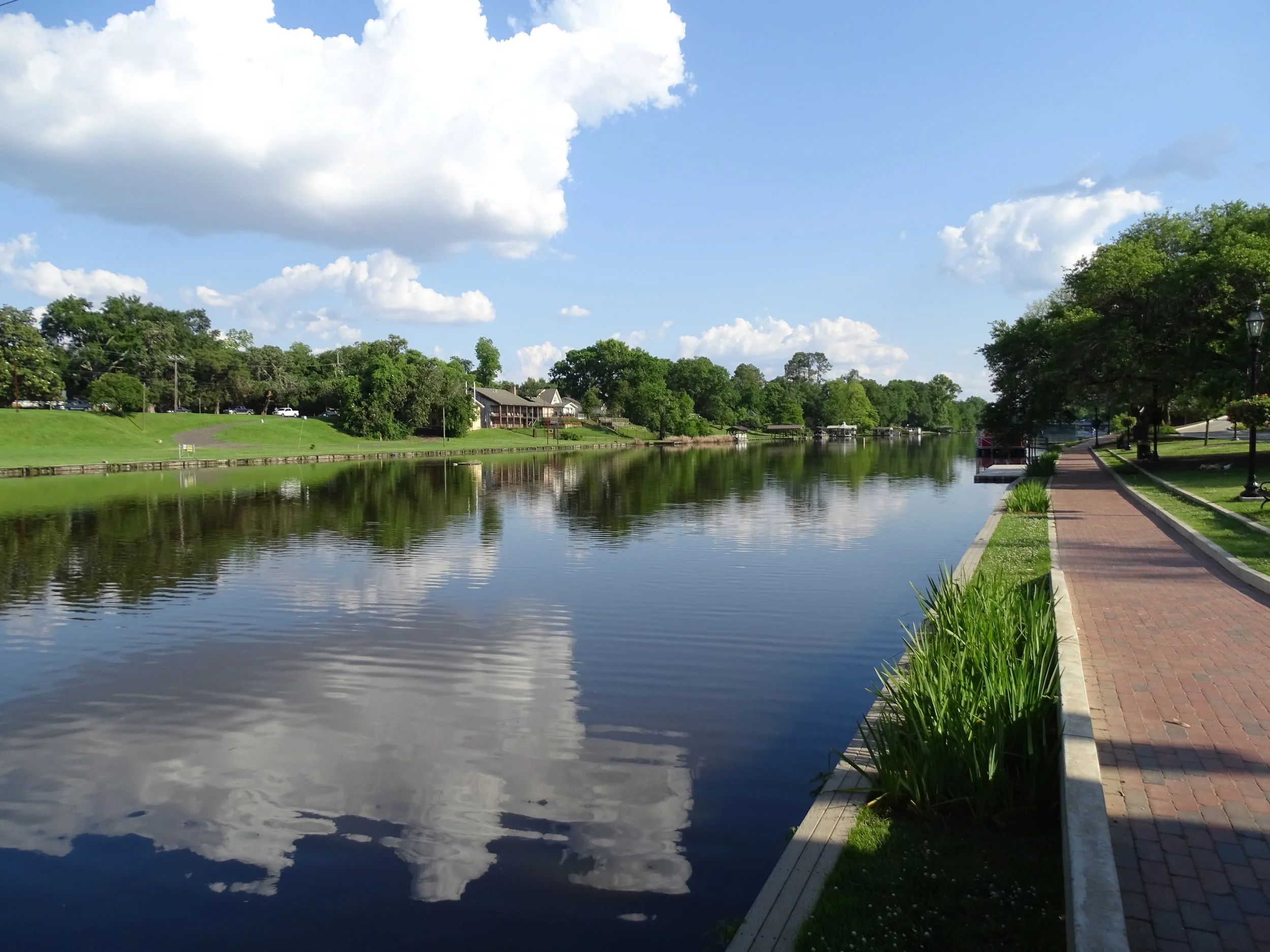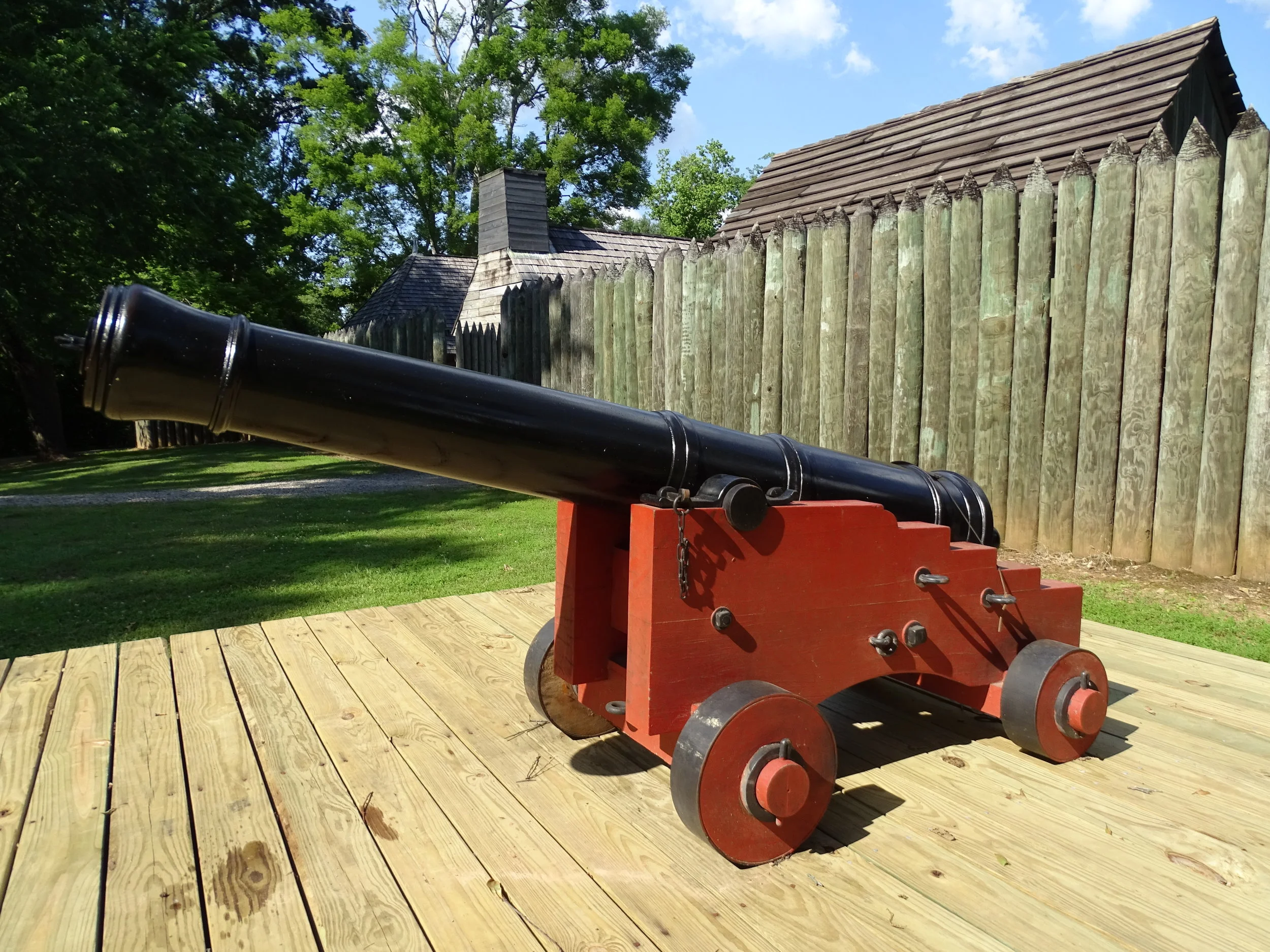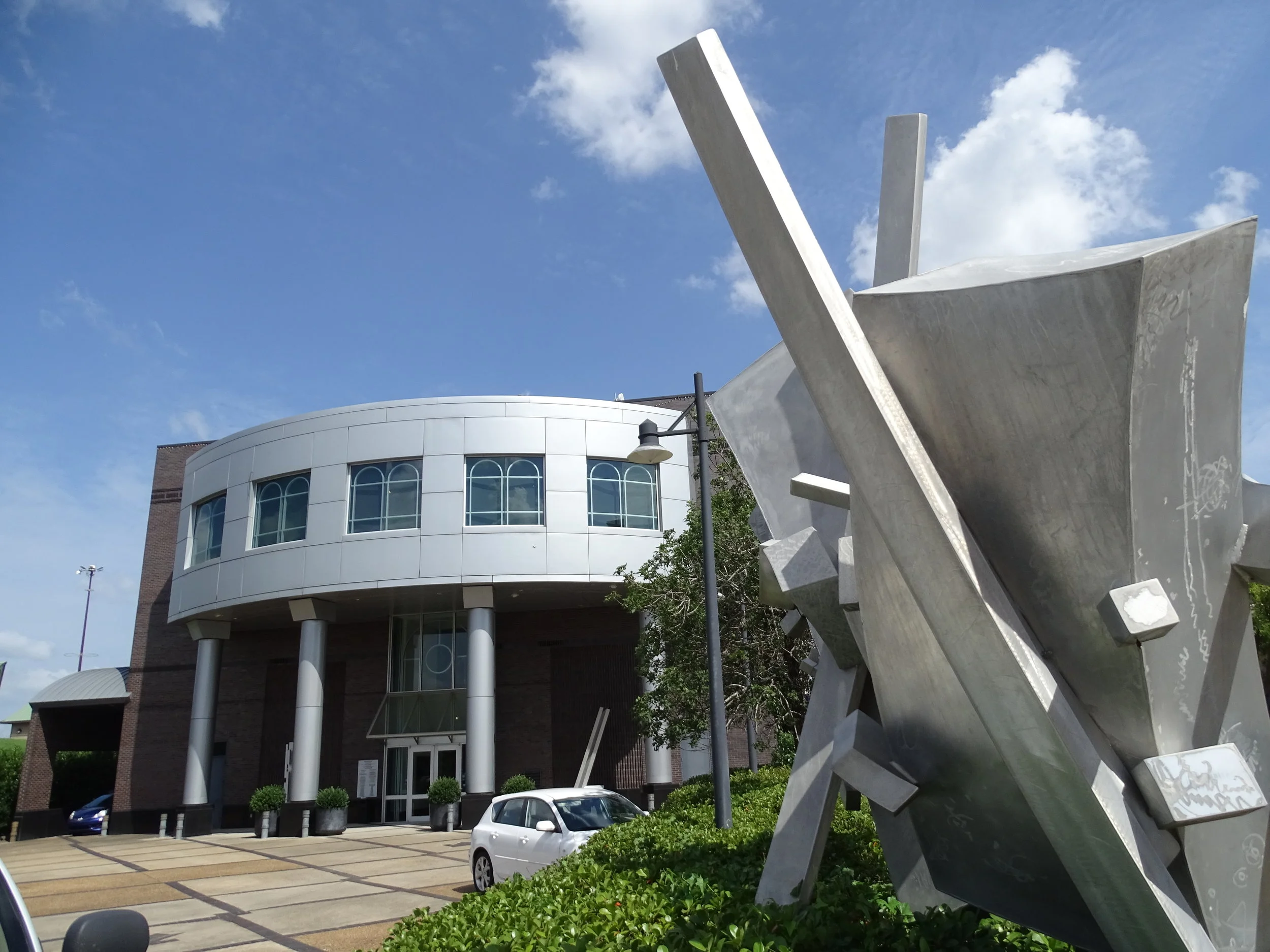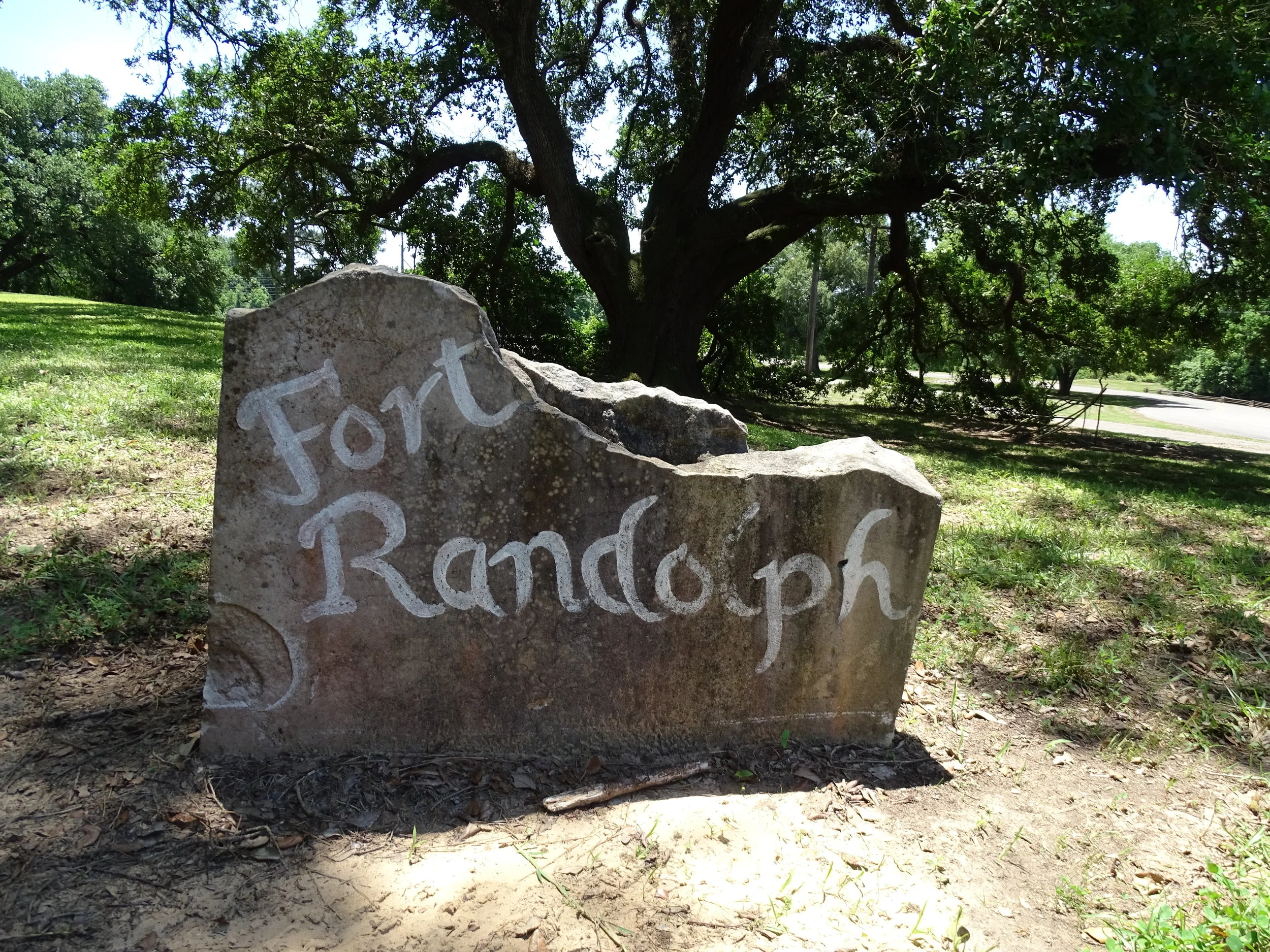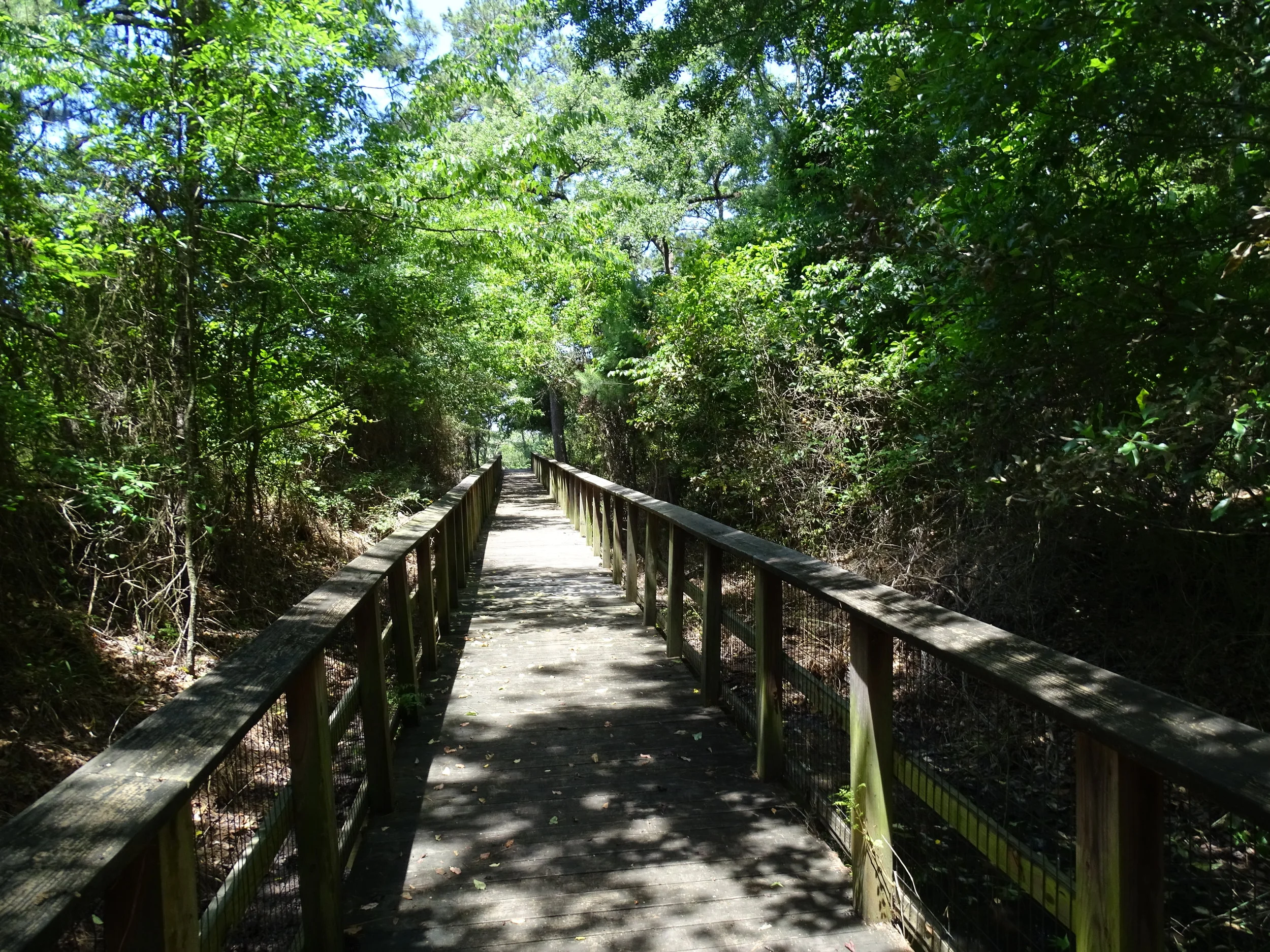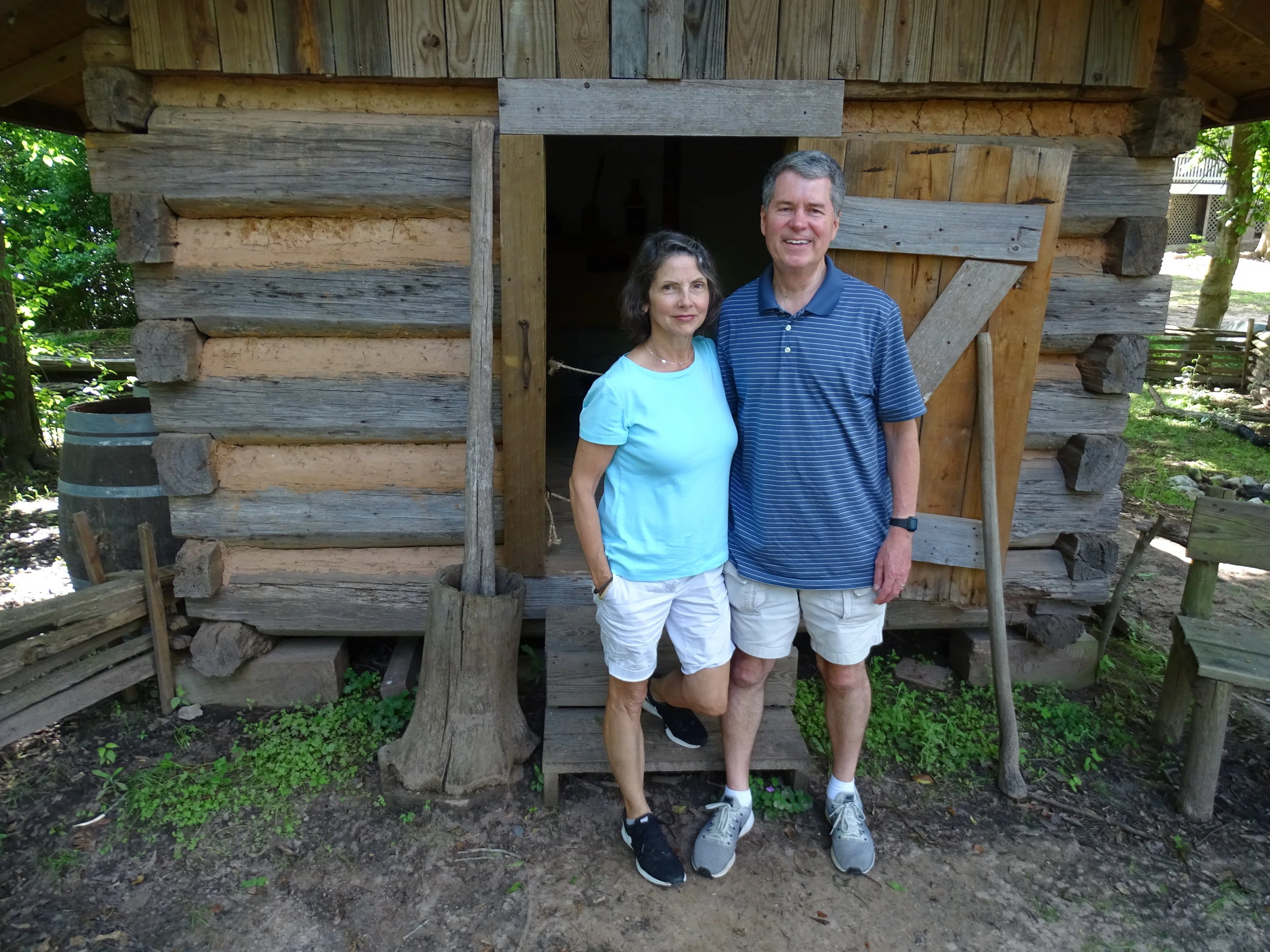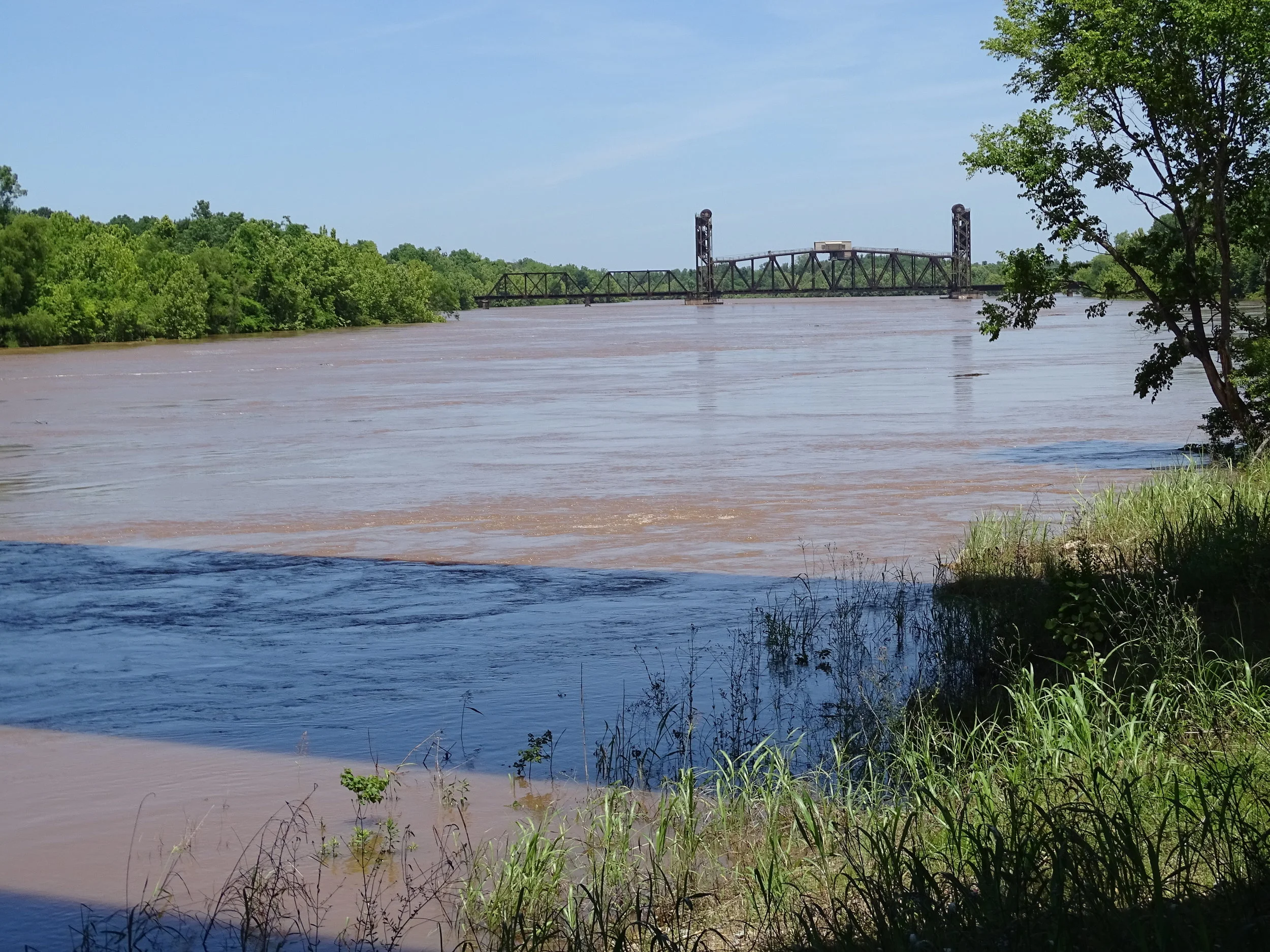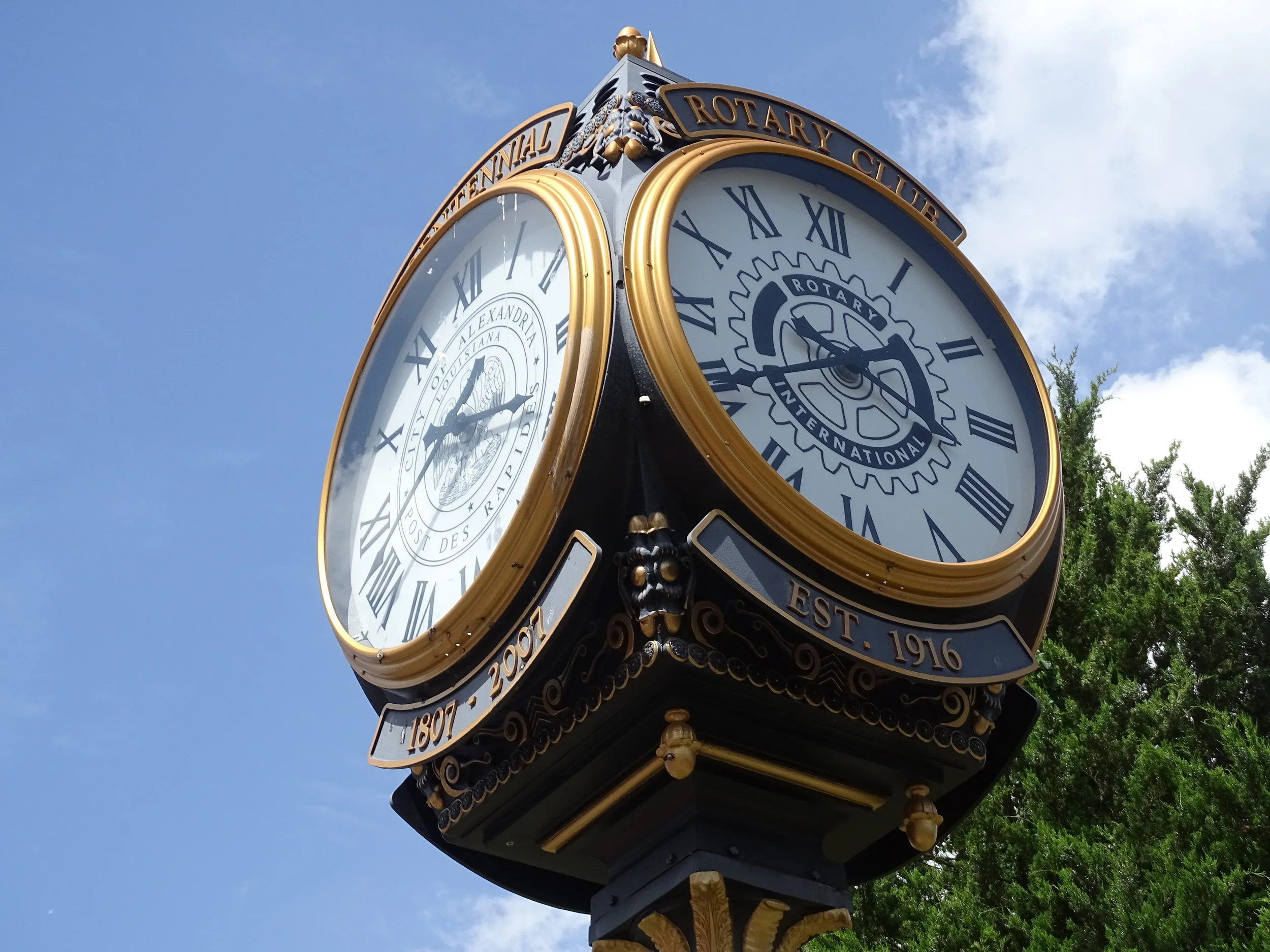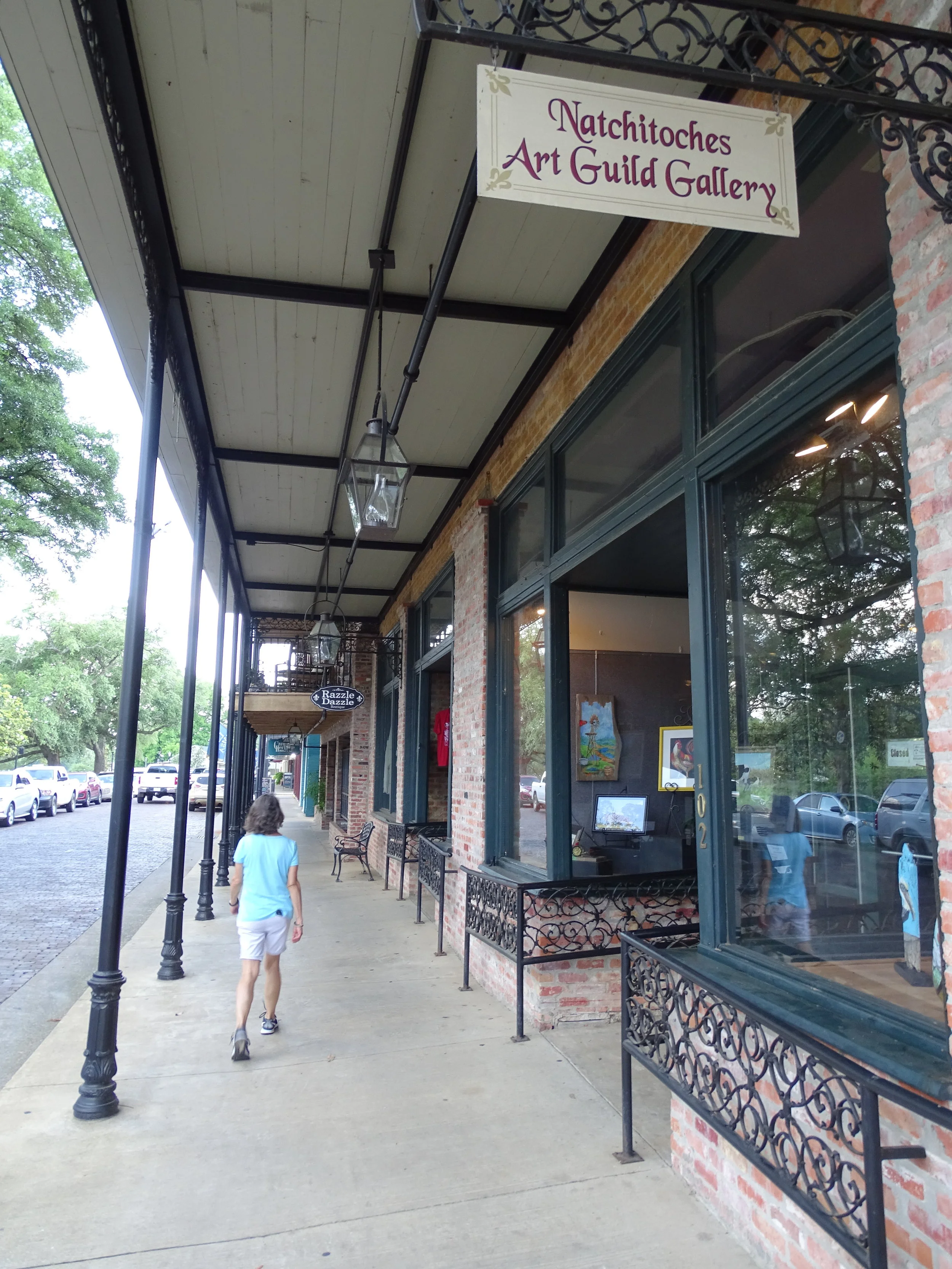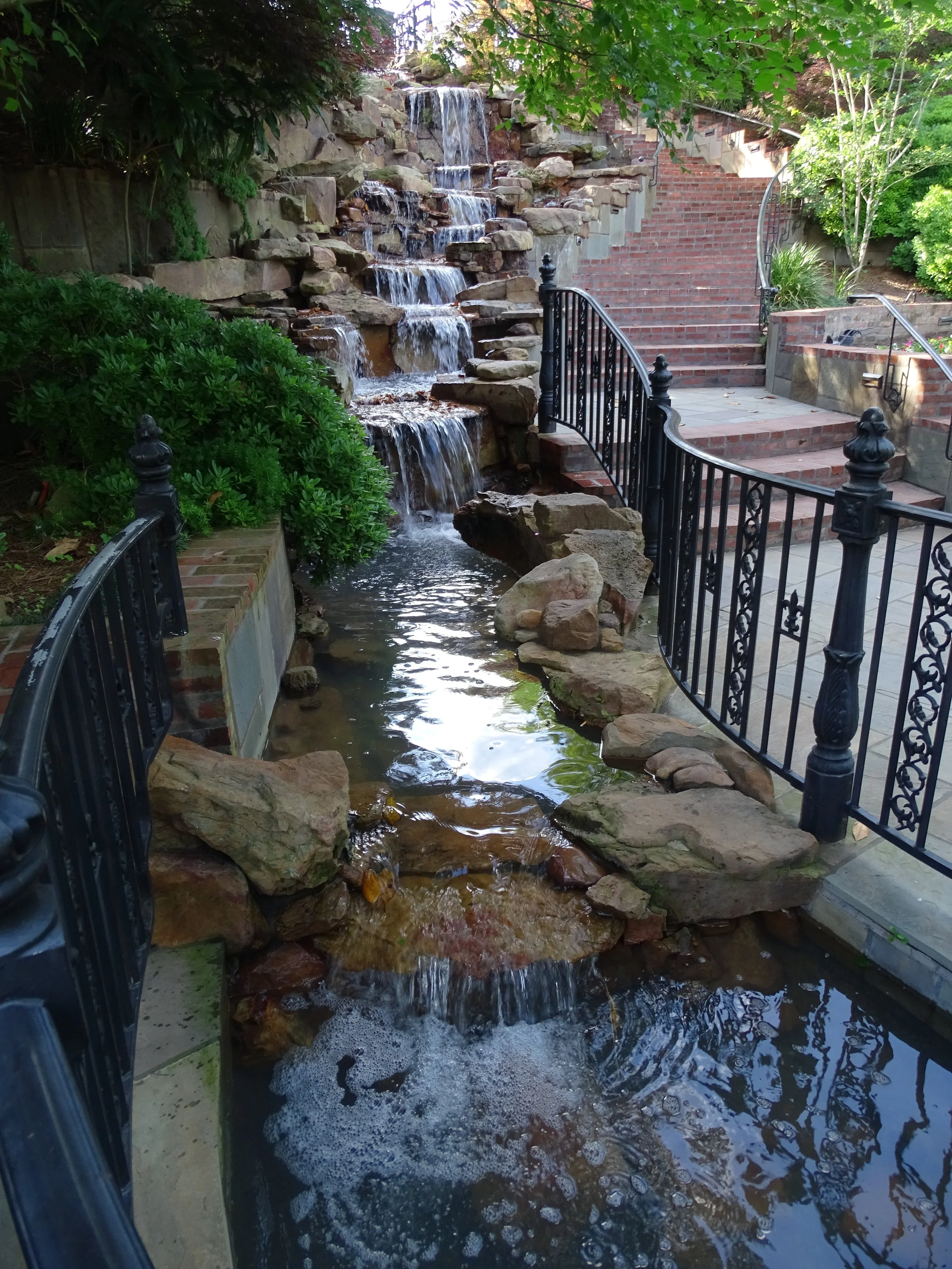Louisiana: Natchitoches and Alexandria Deliver History and Scenic Views
Natchitoches’ historic district is next to Cane River Lake, which was created when the nearby Red River changed its course.
Separated by only 55 miles, the Louisiana cities of Natchitoches and Alexandria are fun places to visit in the middle of the state. In fact, Alexandria is near the exact geographical center of Louisiana.
NATCHITOCHES
The hardest thing about visiting Natchitoches is figuring out how to pronounce it. We’re going to go with “Nack-a-tish” because that’s what a few of the locals told us. However, we ran into two examples of “Nakatosh,” so who knows for sure. Either way (or create your own version), Natchitoches has been a travel destination since it was settled in 1714.
Homes adorn the shore of Cane River Lake in Natchitoches.
Cane River Lake provides a beautiful setting for the city’s impressive historical district. We thought it was a river until reading the history of the lake. Other cities we’ve visited have picturesque shorelines or attractive river walks such as Alexandria, but Natchitoches stands among the prettiest and clearly one of the most peaceful for an evening stroll. We’re planning to return when the 300,000 lights along the lake are turned on for the city’s Christmas celebration.
The structures at Fort St. Jean Baptiste are replicas of the original fort based on the designer’s plans and extensive research conducted in Louisiana, Canada and France.
A cannon stands guard at the fort’s entrance.
The Fort St. Baptiste State Historic Site was one of the highlights of our Natchitoches visit. The site features a full-scale replica of the fort that served as the primary French trade center in the Lower Mississippi Valley. It’s fun to walk through it and see the guardhouse, jail, warehouse, church, commandant’s lodging, officers’ quarters and barracks for the soldiers. Construction of the fort began in 1716, and it served as a military outpost and commercial trade center until 1762. That’s when England defeated France in the French and Indian War and forced the French to cede the Louisiana colony to Spain. The fort continued to serve as a trade center, but the Spanish abandoned it when the location no longer met the original purpose of defending a territorial boundary. In 1803, the United States acquired the area through the Louisiana Purchase, but the fort was in ruins, which led to the establishment of Fort Claiborne nearby.
The Red River runs next to downtown Alexandria and adds a scenic touch to the city.
The Gillis William Long Bridge spans the Red River, connecting Alexandria and Pineville.
ALEXANDRIA
The Red River wraps around the northeast corner of Alexandria, which gives the city a popular riverside area adjacent to its downtown. Landmarks include the Alexandria Riverfront Center, the Alexandria Museum of Art and the Coughlin Saunders Performing Arts Center. Other attractions include the Alexandria Riverfront Amphitheater and Alexandria Levee Park Recreation Area, which are connected by a paved walking path. On the other side of the river, the city of Pineville also has an attractive riverfront.
Next to the river, the Alexandria Museum of Art features a permanent exhibit called Connected Visions: Louisiana’s Artistic Lineage. It also hosts rotating exhibits.
The Red River made Alexandria prosperous because, when it was founded, the transportation of goods largely took place on waterways. Near the end of the Civil War, this role led the Confederate army to build a pair of earthen forts on the riverbank opposite of the city to keep the Union army from using the river as a supply channel. Today, those forts in Pineville can be toured.
Seeing Civil War forts Randolph and Buhlow is one of the attractions in Pineville, La., which is located across the Red River from Alexandria, La.
Boardwalks at Fort Randolph in Pineville provide access to the earthen walls created by the Confederate army to place cannons in defensive positions to keep union troops from using the Red River.
The Forts Randolph and Buhlow State Historic Site at 135 Riverfront St., Pineville, is open Tuesdays through Saturdays from 9 a.m. to 5 p.m., except for Thanksgiving, Christmas and New Year’s Day. It includes a museum, history and nature programs, picnic areas and about 1 mile in walking trails.
Arla screams to Linda that the oven behind them at Fort Randolph in Alexandria is a giant nest of hornets.
Linda looks at the hornets’ nest before running for safety. Neither Linda nor Arla were harmed in the shooting of these photos, which was fortunate for the photographer.
ARLA’S SHOCKING MOMENT
While shooting photos of Forts Randolph and Buhlow, Doug spotted an outdoor oven that I suppose was used in Civil War times. He asked Linda to pose by it and she persuaded me to go with her. As soon as we walked up to the oven, I could tell that something wasn’t quite right. Little mud piles with holes in the center covered the thing. They looked like hornet nests to me—dozens of them. Enough barracks for an army of hornets. I immediately knew that somebody could get stung by a hornet here and it’s probably going to be me.
I screamed, “Linda, run! We’re standing next to a hornet’s nest.” She responded quickly, saving us from the painful bites of angry hornets. After pointing out the livid territorial insects zipping around us, Doug took a closer look at the “oven” and agreed that it was the world’s biggest resort for hornets.
Linda tours the historic homes located along the shores of Cane River Lake in downtown Natchitoches.
LINDA’S TAKEAWAY
Natchitoches is one of my favorite towns that we’ve explored in Louisiana. I heard that it’s a special town from a charming, 87-year-old southern woman, named Bobbie, who I visited in a nursing home on occasion. The first time I met Bobbie I asked her to tell me about herself. She proudly replied, “I’m from Natchitoches, Louisiana.” Bobbie loved the history of her hometown and thought there was a lot I could learn if I drove a few hours to see it. I promised to make the trip.
During our visit to Natchitoches, Doug and I walked along a path built alongside the lake. As we strolled, I noticed a display of Christmas lights with the words “Steel Magnolias,” the hit movie in 1989 that starred Julia Roberts, Sally Field and several other famous actresses. I learned that “Steel Magnolias” was filmed in Natchitoches, and that the movie was based on a local true story. I couldn’t believe I didn’t know those important facts about a movie I had seen several times. My takeaway is that there is a lot to learn about my home state, and I wouldn’t have run across these facts if Doug and I were not exploring our neighboring towns.
Fort St. Jean Baptiste includes buildings that show what the fort looked like when serving as an outpost for France.
Linda and Doug tour a cabin at Fort St. Jean Baptiste in Natchitoches.
DOUG’S HISTORICAL HIGHLIGHT
From the brochure for Fort St. Jean Baptiste State Historic Site, here’s the history of Natchitoches that gives it bragging rights as the oldest permanent European settlement later known as the Louisiana Purchase:
“Natchitoches was founded by a French Canadian, Louis Antoine Juchereau de St. Denis, in 1714 while he was in route to Mexico from Mobile, Ala., on a trade mission. When he reached the village of the Natchitoches Indians on the Red River, he had two huts constructed within the village and left a small detachment there to guard the stores and trade with the inhabitants. In 1716, Sieur Charles Claude Dutisne was sent to Natchitoches with a small company of colonial troops to build and garrison an output that would prevent the Spanish forces in the province of Texas from advancing across the border of French Louisiana. This strategic outpost was named Fort St. Jean Baptiste des Natchitoches.”
The Red River flows between Alexandria and Pineville. When we were there, it was at flood level and covered the river’s banks.
GEEZ WHIZ FACTS
The Red River originates near Tucumcari, New Mexico, at an elevation of 5,000 feet. It flows eastward and subsequently forms the boundary between Oklahoma and Texas. It cuts through the southwest corner of Arkansas and then turns south into Louisiana, eventually joining the Mississippi River.
Natchitoches is a Caddo Indian word that means “chinquapin eaters.” Chinquapin is a tree or shrub in the chestnut family, but this plant produces a superior nut for eating and roasting. Think of Natchitoches the next time you hear “The Christmas Song,” which is commonly subtitled “Chestnuts roasting on an open fire.” Instead of chestnuts, it should have been chinquapins roasting on an open fire.
People settled in the Natchitoches area in large numbers after the Louisiana Purchase because of the trading advantages of the Red River. Eventually, however, the river changed its course, bypassing Natchitoches. What was once known as the Red River in Natchitoches is now Cane River Lake.
PARTING SHOTS: A VISUAL TALE OF TWO CITIES
The Rotary Club clock in downtown Alexandria commemorates the city’s bicentennial, with the city being founded in 1807.
The historic Hotel Bentley housed U.S. military leaders during training exercises conducted in Louisiana to prepare troops for World War II.
Linda and Arla check out the Spanish moss hanging from a tree at Fort Buhlow in Pineville.
The 33-block National Historic Landmark District in Natchitoches includes many places to shop.
Historic Natchitoches offers excellent shopping opportunities.
Beau Jardin in Natchitoches serves as an outdoor venue for weddings, receptions and other special events.
A tattoo parlor suggests one way—Nakatosh—to pronounce Natchitoches. The owners are not alone. The Nakatosh Hotel is located a couple of blocks away.

